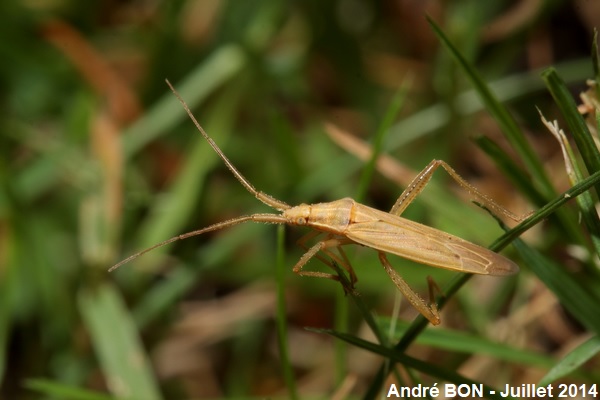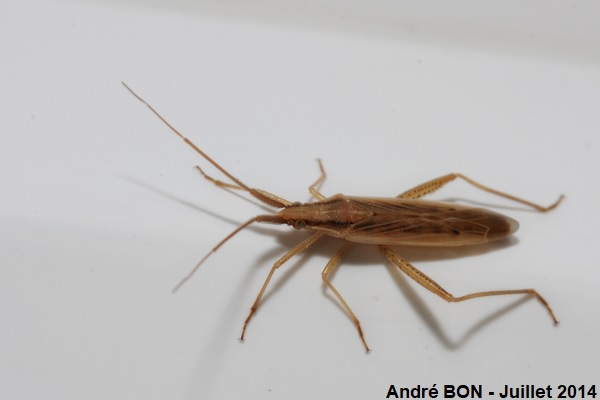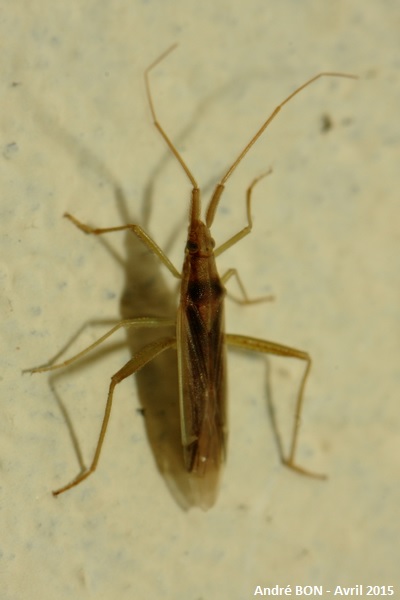




| Stenodema laevigata (Linnaeus, 1758) |





|
|
Scientific name: Stenodema laevigata (Linnaeus, 1758) Common name: French name: Order: Heteroptera Family: Miridae Wingspan : 7.5 to 9 mm. Biotope: Grassy and shady places, open deciduous or coniferous woodlands. Geographic area: Europe, North Africa, Asia east to northern China. Observation period : All year round. There is one brood per year. The adults of the new generation are observed from mid-June. Adults overwinter in the litter or among dry grasses. Mating takes place in May of the following year. |
You can recognize the grass bugs of the Stenodema genus by their elongated body and by the presence of a longitudinal furrow between the eyes. The eyes are very close to the front edge of the pronotum. The pronotum is densely pitted. The hind femurs do not bear any spines. There is a notch close to the apex. The general colour varies from pale brown to ochre, green or dark brown. Females having overwintered turn to green in spring. Adults sting and suck the sap of grasses and grain seeds before they mature. Larvae feed on liquids sucked from the leaves or stems. Stenodema calcarata and Stenodema trispinosa respectively show two or three spines on their hind femur. There is also a possible confusion with female Notostira elongata. These last ones show a smoother pronotum, not pitted. There are dense dark hairs on the first articles of the antennae. |
| [To know more about the Stenodema laevigata] [Next picture] [Top] |

|
The lack of spines on the hind femurs allows to discard the Stenodema calcarata species and the Stenodema trispinosa species. You need to have closer look to decide between Stenodema laevigata and Notostira elongata. This is better visible on the non-reduced picture but the pronotum is relatively pitted and there is no dense dark hairs on the first article of the antennae. So this one is Stenodema laevigata. |
| [To know more about the Stenodema laevigata] [Next picture] [Previous picture] [Top] |

|
Same specimen as before. The notch on the femur, close to the apex, is slightly visible on this picture. |
| [To know more about the Stenodema laevigata] [Next picture] [Previous picture] [Top] |

|
I have been able to put this other specimen on uniform background. |
| [To know more about the Stenodema laevigata] [Next picture] [Previous picture] [Top] |

|
I think that all the criteria to decide for the Stenodema laevigata species are visible on this picture (in an easier way on the non reduced picture). |
| [To know more about the Stenodema laevigata] [Previous picture] [Top] |

|
Another picture so that you can see the entire insect. |